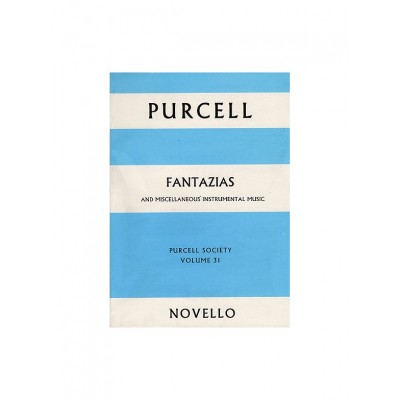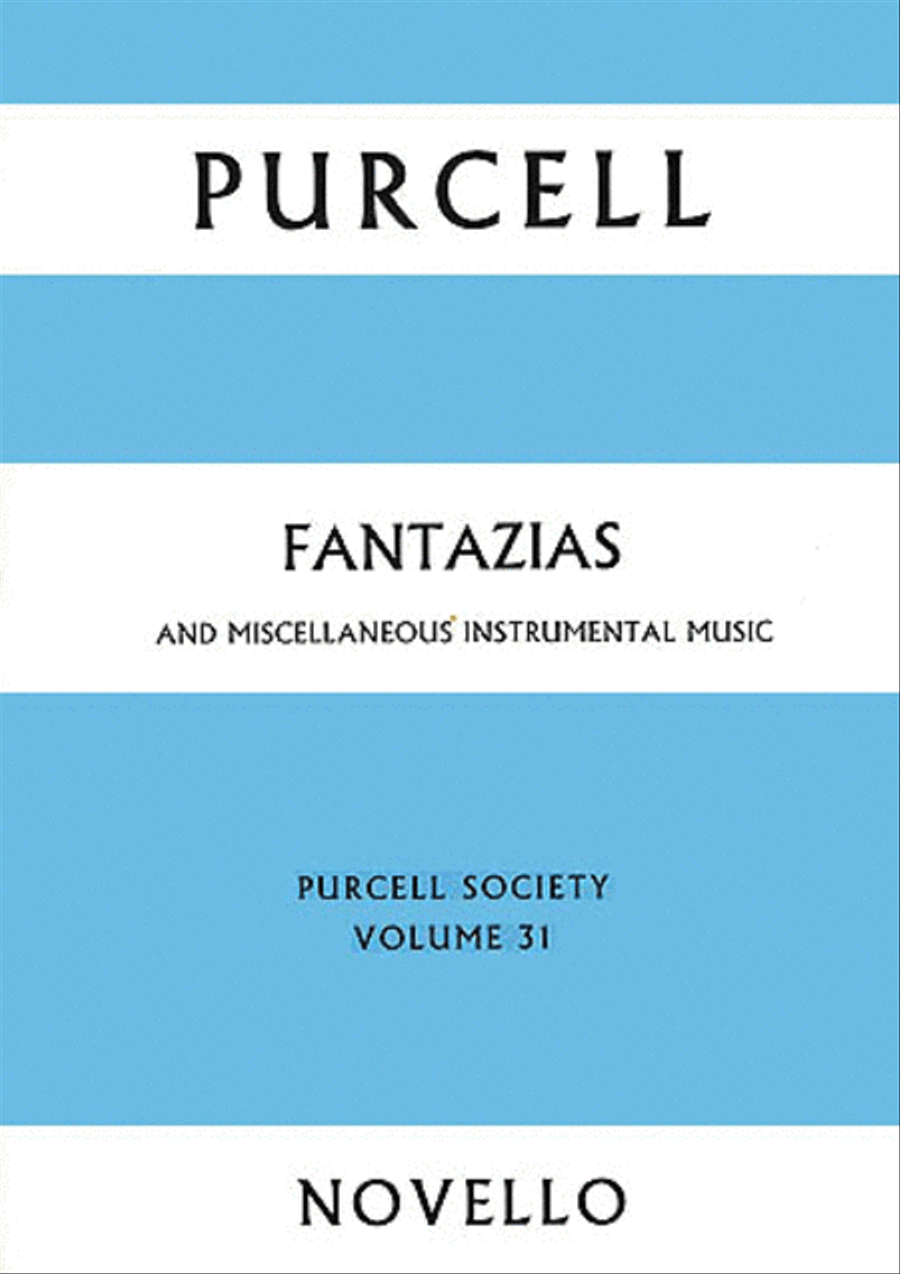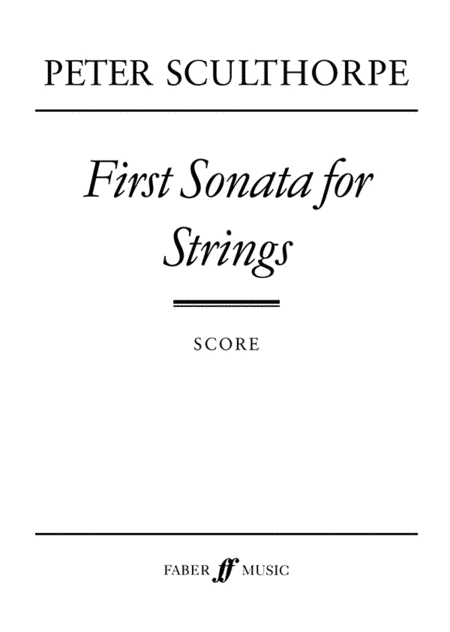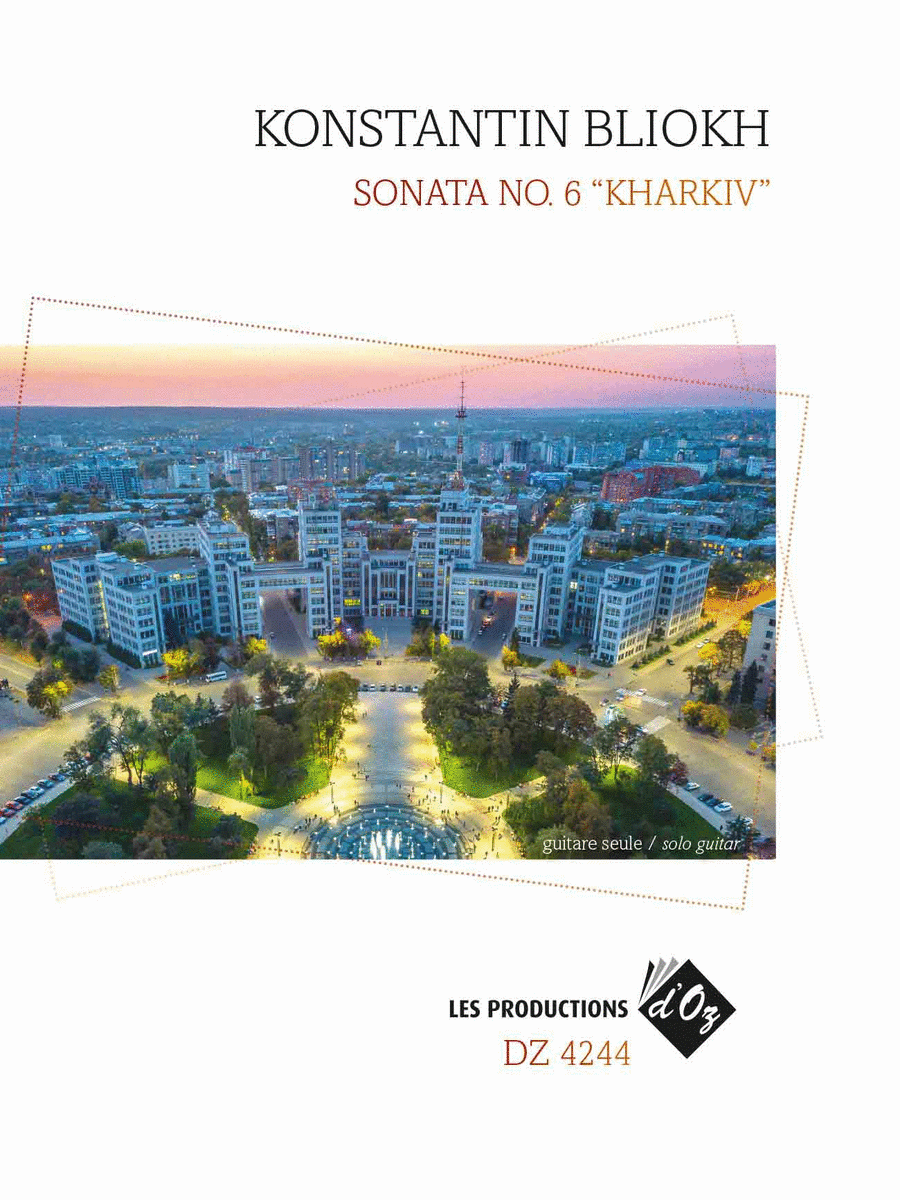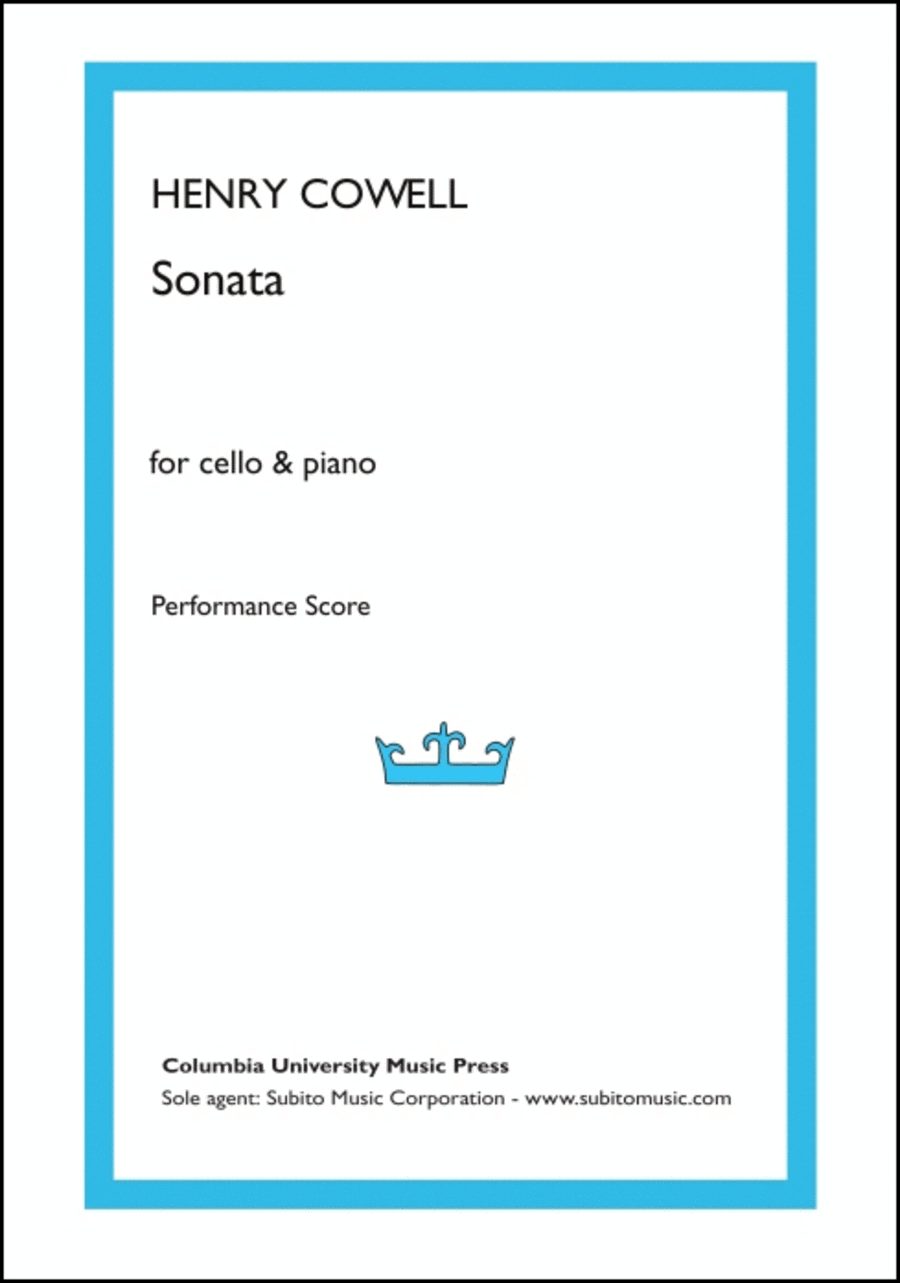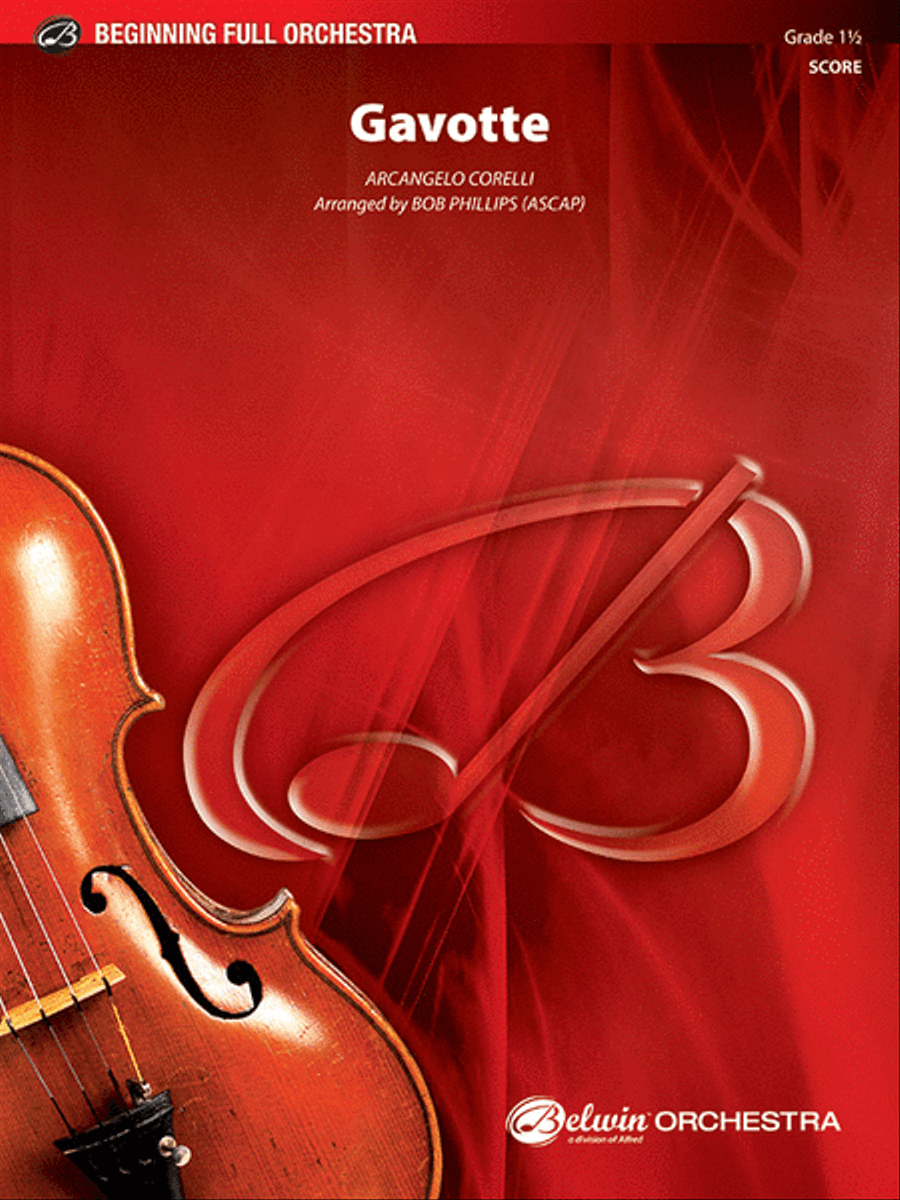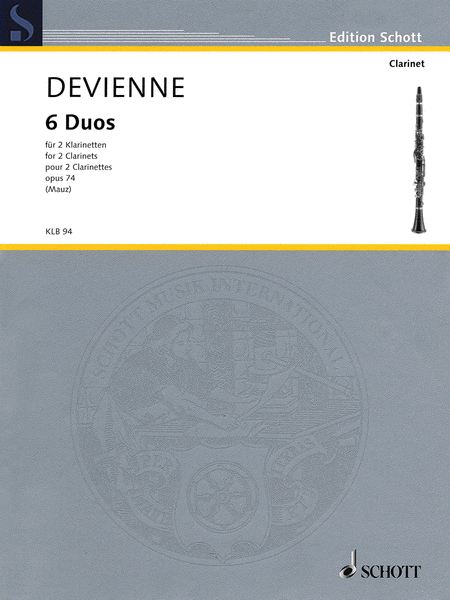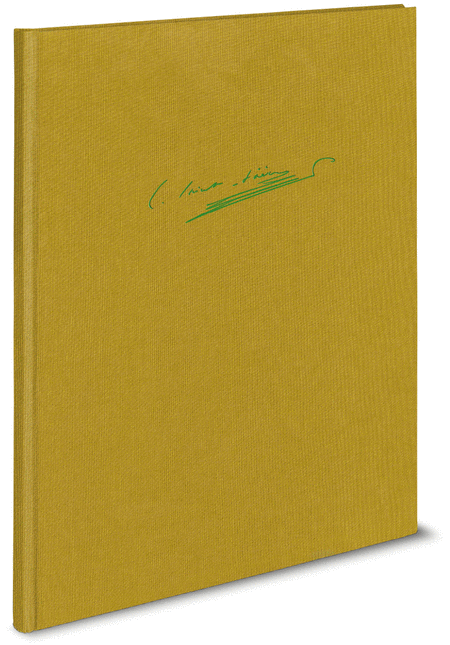|
| First Sonata For Strings
(Score) (SCULTHORPE
PETER)
Conducteur [Partition]
Faber Music Limited
Par SCULTHORPE PETER. An unmistakeable Australian accent in its throbbing phrase...(+)
Par SCULTHORPE PETER. An unmistakeable Australian accent in its throbbing phrases for low strings and in the dream-time patience of drawn-out melodies, which can only be called. . .though the word is in disrepute among most contemporary composers. . .beautiful. This must be one of his most appealing works. Sydney Morning Herald 31 October 1986/ Répertoire / Conducteur
Délais: 2-5 jours - En Stock Fournisseur | | |
| The Library Of Modern
Piano Music
Piano seul [Partition] - Intermédiaire/avancé
Amsco Wise Publications
Some of the most beautiful and diverse pieces by some of the finest composers in...(+)
Some of the most beautiful and diverse pieces by some of the finest composers in recent history are included in this enormous Library Of Modern Piano Music. Such a comprehensive collection of brilliant works for solo Piano belies the rich quality and sheer amount of music being composed that just begs to be learned. Over 100 fantastic pieces are guaranteed to keep you learning from this truly classic selection until the next century!The Library Of Modern Piano Music boasts an unprecedented volume and variety of amazing compositions, some well-known, some more unfamiliar, some composed as standalone pieces and others as film scores, but the one thing uniting them all is their impeccable musicality and how enjoyable they are to play. Featuring the biggest names in contemporary classical music, composers like Einaudi lend their wonderful compositions (Primavera, Una Mattina), and all-round geniuses like Philip Glass are represented with a generous selection of their finest work (Metamorphosis Five, Opening Piece From Glassworks and more).The varied progression of Piano music through the 20th century to the present day has given rise to an exceptionally vast and diverse repertoire. The unbelievable depth of the composers included here means you'll rarely be stuck for something to play. Kaija Saariaho, Stravinsky, Francis Poulenc, Dustin O'Halloran, Nico Muhly and Witold Lutoslawski are genuinely just a fraction of the composers featured in The Library Of Modern Piano Music. Some great standalone compositions like Samuel Barber's incomparable Adagio For Strings sit aside excerpts from longer works like a portion of Edward Gregson's An Album For My Friends or Joby Talbot's Once Around The Sun.If you happen to be a fan of film and television scores, a taste of Michael Nyman's distinguished score for The Piano is included, a section from Crouching Tiger, Hidden Dragon, as well as parts of Richard Rodney Bennett's score for the now rarely-seen but superb 1980s miniseries of Tender Is The Night. Many established composers are included in this collection who are widely-recognised as masters. However, The Library Of Modern Piano Music also includes many young virtuosos who have not yet achieved that status but are certainly well on their way.These original compositions span standalone pieces, albums, suites and arrangements from diverse talents, making The Library Of Modern Piano Music a collection that is certain to be seen by future generations as a perfect collection of the best of contemporary classical music. / Piano
Délais: 2-5 jours - En Stock Fournisseur | | |
| Purcell Society Volume
31 - Fantazias And
Miscellaneous
Instrumental Music (full
Score)
Novello & Co Ltd.
In Nomine Of Six Parts Pavan In G Minor Pavan Of Four Parts Ove...(+)
In Nomine Of Six Parts Pavan In G Minor Pavan Of Four Parts Overture In G Major Fantazia 1-12 Sonata For Trumpet And Strings (First Movement) [Purcell, Henry] Pavan In A Minor Prelude For Unaccompanied Violin Or Recorder Overture In G Minor Pavan In B Flat Major Overture In D Minor The Queen's Funeral March And Canzona Cibell For Trumpet And Strings Chacony The Staircase Overture Suite In G Major In Nomine Of Seven Parts Fantazia: Three Parts On A Ground Fantazia Upon One Note Pavan In A Major
Délais: Sur commande | | |
| Symphony No. 2: Movement
2 (BOLOGNE JOSEPH)
Orchestre à Cordes
Hal Leonard
for String Orchestra Score and Parts. Par BOLOGNE JOSEPH. This arrangement is a ...(+)
for String Orchestra Score and Parts. Par BOLOGNE JOSEPH. This arrangement is a wonderful introduction to the music of one of Mozart?s lesser-known contemporaries. In sonata-allegro form, D Major and ¾ time, the first theme is dramatic and bold, while the second theme is lyric and more delicate. The upper strings share conversational passages, sometimes adding the cellos. The basses have mostly accompanimental and harmonic duty to play. An excellent opportunity for classical performance interpretation, with emphasis on elegance and precision./ Répertoire / Orchestre à Cordes
Délais: 2-5 jours - En Stock Fournisseur | | |
| 6 Duos Op. 74
2 Clarinettes (duo)
Schott
Devienne's many compositions include several works for the clarinet: sonatas for...(+)
Devienne's many compositions include several works for the clarinet: sonatas for clarinet and piano, duets and trios with flute, bassoon or horn, quartets with strings, a concerto for two clarinets and orchestra and duets for two clarinets.These Six Duets Op. 74 have enlivened clarinet lessons for many years now with their appealing melodies and accessible charm. The present new edition incorporates numerous previously omitted details and corrections in a score based upon 'Six Duos pour deux Clarinettes dédiés Aux Amateurs' first published by Simrock, plate #1183. / 2 Clarinettes
Délais: 2-5 jours - En Stock Fournisseur | |
|
|
|
| Purcell Society Volume 31 - Fantazias And Miscellaneous Instrumental Music (Full Score)
Orchestre [Conducteur]
Music Sales
Orchestra (Score) SKU: HL.14011053 Composed by Henry Purcell. Music Sales...(+)
Orchestra (Score) SKU:
HL.14011053 Composed
by Henry Purcell. Music
Sales America. Baroque.
Score. 144 pages. Music
Sales #NOV151031.
Published by Music Sales
(HL.14011053). UPC:
884088433604.
7.75x11.0x0.43
inches. Purcell
Society Volume 31. Full
Score. $77.95 - Voir plus => AcheterDélais: 2 to 3 weeks | | | |
| First Sonata for Strings
Orchestre [Conducteur]
Faber Music Limited
Orchestra SKU: AP.12-0571517854 Composed by Peter Sculthorpe. Masterworks...(+)
Orchestra SKU:
AP.12-0571517854
Composed by Peter
Sculthorpe. Masterworks;
Performance Music
Ensemble; Single Titles;
String Orchestra. Faber
Edition. Form: Sonata.
20th Century. Score.
Faber Music
#12-0571517854. Published
by Faber Music
(AP.12-0571517854).
ISBN 9780571517855.
UPC: 9780571517855. 9x12
inches.
English. $15.99 - Voir plus => AcheterDélais: 1 to 2 weeks | | | |
| Sonata (concertino) in A minor
2 Violons et Basse continue [Conducteur]
Edition HH
By Giuseppe Torelli. Edited by Michael Talbot. For 2 Violins, basso continuo. Fu...(+)
By Giuseppe Torelli.
Edited by Michael Talbot.
For 2 Violins, basso
continuo. Full score and
parts. Duration 7
minutes. Published by
Edition HH Music
Publishers (U.K. Import).
$23.95 - Voir plus => AcheterDélais: 4 to 6 weeks | | | |
| Sonata No. 6 "Kharkiv", Op. 48
Guitare
Guitare classique [Conducteur] - Avancé
Productions OZ
Guitar solo - Advanced SKU: DZ.DZ-4244 Composed by Konstantin Bliokh. Sco...(+)
Guitar solo - Advanced
SKU: DZ.DZ-4244
Composed by Konstantin
Bliokh. Score. Les
Productions d'OZ #DZ
4244. Published by Les
Productions d'OZ
(DZ.DZ-4244). ISBN
9782898521614. La
Sonate n° 6 Kharkiv
pour guitare solo a
été composée en
2021, Ã la fin du
confinement lié au
COVID-19. Ã? ce
moment-là , ma famille
et moi étions
restés dans notre
ville natale de Kharkiv
(également connue sous
le nom de Kharkov), en
Ukraine, pendant près
de deux ans. Nous
considérions cette
période de pandémie
comme un désastre,
mais nous avons
réalisé plus tard
que c'était en fait un
moment plutôt heureux,
car la guerre est
arrivée dans notre
pays quelques mois plus
tard. Depuis 2022, une
fraction considérable
des 1,5 million de
citoyens de Kharkiv ont
quitté leur foyer,
ceux qui sont restés
vivent sous des attaques
incessantes de missiles,
et beaucoup ont été
tués. Je voudrais
dédier cette Sonate
à la ville
frontalière de Kharkiv
et, surtout, Ã ses
citoyens souffrant de la
guerre.
Pourtant,
la musique de la Sonate
n'a aucun programme
spécifique. Ici, je
donnerai un bref
aperçu de ses
principaux éléments
de composition pour
faciliter les
interprétations
futures.
Les
premier et quatrième
mouvements de cette
Sonate sont basés sur
l'interaction entre le
principe
dodécaphonique et le
centre tonal de sol
majeur, naturel pour la
guitare. En particulier,
le premier mouvement est
basé sur l'interaction
de la triade de sol
majeur Solâ??Siâ??Ré
des cordes de guitare
à vide 2â??3â??4, le
motif ascendant 1
impliquant les notes
Miâ??Fa#â??Laâ??Do#
(Ã l'origine sur la
première corde), et le
motif descendant 2
utilisant les notes
Miâ??Doâ??Sibâ??La
(Ã l'origine sur la
corde de basse 6). Ces
éléments se
complètent presque
pour former douze tons
(Ã l'exception du Fa
manquant), et les motifs
alternent avec des
fragments ostinato où
chaque note de la triade
de sol majeur est
déplacée pas Ã
pas d'un demi-ton vers le
haut ou vers le
bas.
Le
deuxième mouvement est
un Scherzo impliquant de
nombreux demi-tons dans
des accords accentués
et des passages rapides,
ainsi qu'un mouvement
mélodique chromatique
dans la voix de basse. Il
est presque atonal dans
certains fragments, mais
a un centre tonal global
de la mineur.
Le
troisième mouvement
est un Adagio
méditatif basé sur
un thème composé
dans l'échelle
hexatonique
Réâ??Miâ??Faâ??Sol#
â??Laâ??Si et des
accords ostinato
impliquant les cordes de
basse à vide
Miâ??Laâ??Ré et le
demi-ton
Siâ??Do.
Enfin,
le quatrième mouvement
est basé sur le
thème
dodécaphonique complet
composé de deux
phrases comprenant les
motifs 1 et 2 du premier
mouvement :
Solâ??Faâ??Sibâ??Labâ
??Doâ??Mibâ??Ré et
Miâ??Siâ??Do#â??Laâ??
Fa#. Ce thème est
présenté dans ses
formes prime et
rétrograde. Il y a des
dialogues entre la
première corde, les
basses et les cordes
médianes à vide,
similaires au premier
mouvement. Ã? son
apogée, le thème
dodécaphonique est
interprété en
utilisant le mouvement
parallèle de l'accord
de sol majeur standard de
la guitare avec les
cordes médianes Ã
vide sur douze
positions.
La
Sonate a été
créée en
première et
enregistrée (CD Naxos
No. 8.574630) par le
célèbre guitariste
ukrainien Marko Topchii,
qui a également
vécu et étudié
à Kharkiv. Je lui suis
extrêmement
reconnaissant pour
l'interprétation
brillante de cette
pièce.
Je suis
très redevable envers
Productions d'Oz d'avoir
conservé mes notations
originales là où
celles-ci ne
correspondent pas au
style de
l'éditeur.
Sona
ta No. 6 Kharkiv for
guitar solo was composed
in 2021, in the end of
the COVID-19 lockdown. At
that time my family and I
were staying in our home
city of Kharkiv (also
known as Kharkov),
Ukraine for almost two
years. We considered that
pandemic period as a
disaster, but later have
realized that it actually
was a rather happy time,
because a war came to our
homeland just a few
months later. Since 2022
a considerable fraction
of the 1.5 millions of
Kharkiv citizens have
left their homes, those
who stayed have been
living under ceaseless
missile attacks, and many
have been killed. I would
like to dedicate this
Sonata to the frontier
city of Kharkiv and, most
of all, to its citizens
suffering from the
war.
Yet, the music of
the Sonata does not have
any specific program.
Here I will give a brief
overview of its main
composition elements to
facilitate future
interpretations.
The
first and fourth
movements of this Sonata
are based on the
interplay between the
twelve-tone principle and
the G-major tonal center,
natural for the guitar.
Namely, the first
movement is based on the
interaction of the
G-major triad Gâ??Bâ??D
of the open guitar
strings 2â??3â??4,
ascending motif 1
involving the notes
Eâ??F#â??Aâ??C#
(originally on the first
string), and descending
motif 2 using the notes
E-â??Câ??Bbâ??A-
(originally, on the bass
string 6). These elements
supplement each other to
almost make up twelve
tones (apart from the
missing F), and the
motifs alternate with
ostinato fragments where
each note in the G major
triad is step-by-step
moved by a semitone up or
down.
The second
movement is a Scherzo
involving numerous
semitones in accented
chords and fast passages,
as well as chromatic
melodic motion in the
bass voice. It is almost
atonal in some fragments,
but has an overall tonal
center of A-minor.
The
third movement is a
meditative Adagio based
on a theme composed
within hexatonic scale
Dâ??Eâ??Fâ??G#â??Aâ?
?B and ostinato chords
involving open bass
strings Eâ??Aâ??D and
semitone
Bâ??C.
Finally, the
fourth movement is based
on the complete
twelve-tone theme
consisting of two phrases
including motifs 1 and 2
from the first movement:
Gâ??Fâ??Bbâ??Abâ??Câ
??Ebâ??D and
Eâ??Bâ??C#â??Aâ??F#.
This theme is presented
in its prime and
retrograde forms. There
are dialogues between the
first string, basses and
open middle strings,
similar to the first
movement. In the
culmination, the
twelve-tone theme is
performed using the
parallel motion of the
standard guitar G-major
chord with open middle
strings across twelve
positions.
The Sonata
was premiered and
recorded (CD Naxos No.
8.574630) by the
prominent Ukrainian
guitarist Marko Topchii
who has also lived and
studied in Kharkiv. I am
extremely grateful to him
for the brilliant
performance of this
piece.
I am greatly
indebted to Productions
dâ??Oz for keeping my
original notations in
places where these do not
conform to the
publisherâ??s style. $9.95 - Voir plus => AcheterDélais: 2 to 3 weeks | | | |
| Sechs dreistimmige Praludien und Fugen fur Streicher / Six Three-Part Preludes and Fugues for Strings
Alto seul
Breitkopf & Härtel
Viola SKU: BR.OB-5294-19 Book 2. Composed by Wolfgang Amadeus Moza...(+)
Viola SKU:
BR.OB-5294-19 Book
2. Composed by
Wolfgang Amadeus Mozart.
Edited by Johann Nepomuk
David. Stapled.
Orchester-Bibliothek
(Orchestral Library).
The Six Three-Part
Preludes and Fugues are
regarded as a unique
testimony to Mozart's
profound interest in the
works of Bach.
Classical period. Part.
KV 404a, Nos. 4-6. 16
pages. Breitkopf and
Haertel #OB 5294-19.
Published by Breitkopf
and Haertel
(BR.OB-5294-19). ISBN
9790004338025. 9 x 12
inches. The Six
Three-Part Preludes and
Fugues are regarded as a
unique testimony to
Mozart's profound
interest in the works of
Bach. Or was it a
brilliant contemporary of
his who arranged the two
preludes and five fugues
by Johann Sebastian, and
one fugue by Wilhelm
Friedemann for string
trio and supplemented the
collection with further
preludes? The new
editions put the music
text of Johann Nepomuk
David's edition of the
parts to the test,
especially the editor's
practical arrangement,
which reflected the
performance style of his
time. These new editions
go one step further, also
in a
performance-practical
sense. The publication of
the score and
(orchestral) parts also
enables string orchestras
to play this piece for
the first time - an
instrumental possibility
that is perfectly
legitimate, both
musically and
historically. It is a
fascinating addition to
the repertoire that one
can recommend to every
chamber
orchestra.Contents:No. 4
Adagio Mozart's
arrangement of Johann
Sebastian Bach, Adagio e
dolce from the Sonata for
Organ III BWV 527 Fuga
Mozart's arrangement of
Johann Sebastian Bach,
Contrapunctus 8 from the
Art of Fugue BWV 1080No.
5 Largo Mozart's
arrangement of Johann
Sebastian Bach, Largo
from the Sonata for Organ
II BWV 526 Fuga Mozart's
arrangement of Johann
Sebastian Bach, Allegro
from the Sonata for Organ
II BWV 526No. 6 Adagio by
Wolfgang Amadeus Mozart
Fuga Mozart's arrangement
of Wilhelm Friedemann
Bach, Fuga in F minor
Falk No. 31/8. $10.95 - Voir plus => AcheterDélais: 3 to 4 weeks | | | |
| Sonata 2trp/str Score [Conducteur] - Facile
Schott
2 trumpets (oboe and trumpet), strings and basso continuo - easy SKU: HL.4900...(+)
2 trumpets (oboe and
trumpet), strings and
basso continuo - easy
SKU: HL.49001705
Composed by Daniel
Purcell. Edited by Frank
Nagel. This edition:
Saddle stitching. Sheet
music. Concertino
(Chamber Orchestra).
Classical. Score. 12
pages. Duration 8'.
Schott Music #CON 116.
Published by Schott Music
(HL.49001705). ISBN
9790001023320.
9.0x12.0x0.083
inches. A baroque
work with decidedly
representative character.
The technical degree of
difficulty in the
orchestra is low. The
first trumpet can also be
played by an oboe. $20.99 - Voir plus => Acheter | | | |
| OTONA PIANO
Piano seul [Conducteur]
Yamaha
Piano Solo SKU: YM.GTP01100090 Very Easy Classics arranged for Adults<...(+)
Piano Solo SKU:
YM.GTP01100090
Very Easy Classics
arranged for Adults.
Composed by Various.
Otona Piano Series.
Arranged Classical Music,
Educational, Exercise,
Lesson. Score. Yamaha
Music Media #GTP01100090.
Published by Yamaha Music
Media (YM.GTP01100090).
ISBN 9784636100655.
8.5 x 12
inches. Easy
arrangements for adults
to start playing the
piano for the first time.
Features large,
easy-to-read music
sheets. $15.95 - Voir plus => AcheterDélais: 3 to 4 weeks | | | |
| Sonata
Violoncelle, Piano
Subito Music
Cello & Piano SKU: SU.80103039 For Cello & Piano. Composed by Henr...(+)
Cello & Piano SKU:
SU.80103039 For
Cello & Piano.
Composed by Henry Cowell.
Strings, Cello.
Accompanied by piano.
Performance Score. Subito
Music Corporation
#80103039. Published by
Subito Music Corporation
(SU.80103039).
Cowell's first
extended work had been
lost for many years when
rediscovered by noted
cellist Joel Krosnick. It
has since become an
important part of the
repertoire. The edition
is by Joel Krosnick and
Gilbert Kalish. 32 pages
Published by: Columbia
University Music
Press. $26.95 - Voir plus => AcheterDélais: 2 to 3 weeks | | | |
| Preludio and Allegro
Orchestre à Cordes [Conducteur et Parties séparées] - Facile
Alfred Publishing
By Archangelo Corelli. Arranged by Ruth Siegler. Orchestra. For string. Masterwo...(+)
By Archangelo Corelli.
Arranged by Ruth Siegler.
Orchestra. For string.
Masterworks; Part(s);
Score; String Orchestra.
Highland String
Orchestra. Form: Prelude;
Transcription. Baroque;
Masterwork Arrangement.
Grade 2. 62 pages.
Published by Alfred Music
Publishing
$46.00 - Voir plus => AcheterDélais: 1 to 2 weeks | | | |
| Gavotte
Orchestre à Cordes [Conducteur et Parties séparées] - Débutant
Belwin
Composed by Arcangelo Corelli (1653-1713). Arranged by Bob Phillips. Full Orches...(+)
Composed by Arcangelo
Corelli (1653-1713).
Arranged by Bob Phillips.
Full Orchestra;
Masterworks; Part(s);
Score. Belwin Beginning
Full Orchestra. Baroque;
Masterwork Arrangement.
126 pages. Published by
Belwin Music (AP.41253).
$51.00 - Voir plus => AcheterDélais: 1 to 2 weeks | | | |
| 6 Duos, Op. 74
2 Clarinettes (duo) [Partition]
Schott
For 2 Clarinets - Performance Score. Composed by Fran�§ois Devienne....(+)
For 2 Clarinets -
Performance Score.
Composed by
Fran�§ois Devienne.
Edited by Rudolf Mauz.
Woodwind Ensemble.
Softcover. 24 pages.
Schott Music #KLB94.
Published by Schott Music
(HL.49044526).
$19.99 - Voir plus => AcheterDélais: 24 hours - In Stock | | | |
| Sonatina
Orchestre à Cordes [Conducteur] - Facile
Carl Fischer
Orchestra String Orchestra - Grade 2-2.5 SKU: CF.YAS13F Composed by Muzio...(+)
Orchestra String
Orchestra - Grade 2-2.5
SKU: CF.YAS13F
Composed by Muzio
Clementi. Arranged by
Douglas Townsend. Carl
Fischer Young String
Orchestra Series.
Classical. Full score.
With Standard notation.
12 pages. Carl Fischer
Music #YAS13F. Published
by Carl Fischer Music
(CF.YAS13F). ISBN
9780825848339. UPC:
798408048334. 8.5 X 11
inches. Key: G
major. IApart from
some of his Sonatinas,
Opus 36, Clementi's life
and music are hardly
known to the piano
teachers and students of
today. For example, in
addition to the above
mentioned Sonatinas,
Clementi wrote sixty
sonatas for the piano,
many of them unjustly
neglected, although his
friend Beethoven regarded
some of them very highly.
Clementi also wrote
symphonies (some of which
he arranged as piano
sonatas), a substantial
number of waltzes and
other dances for the
piano as well as sonatas
and sonatinas for piano
four-hands.In addition to
composing, Clementi was a
much sought after piano
teacher, and included
among his students John
Field (Father of the
'Nocturne'), and
Meyerbeer.In his later
years, Clementi became a
very successful music
publisher, publishing
among other works the
first English edition of
Beethoven's Violin
Concerto, in the great
composer's own
arrangement for the
piano, as well as some of
his string quartets.
Clementi was also one of
the first English piano
manufacturers to make
pianos with a metal frame
and string them with
wire.The Sonatina in C,
Opus 36, No. 1 was one of
six such works Clementi
wrote in 1797. He must
have been partial to
these little pieces (for
which he also provided
the fingerings), since
they were reissued
(without the fingering)
by the composer shortly
after 1801. About 1820,
he issued ''the sixth
edition, with
considerable improvements
by the author;· with
fingerings added and
several minor changes,
among which were that
many of them were written
an octave higher.IIIt has
often been said,
generally by those
unhampered by the facts,
that composers of the
past (and, dare we add,
the present?), usually
handled their financial
affairs with their public
and publishers with a
poor sense of business
acumen or common sense.
As a result they
frequently found
themselves in financial
straits.Contrary to
popular opinion, this was
the exception rather than
the rule. With the
exception of Mozart and
perhaps a few other
composers, the majority
of composers then, as
now, were quite
successful in their
dealings with the public
and their publishers, as
the following examples
will show.It was not
unusual for 18th- and
19th-century composers to
arrange some of their
more popular compositions
for different
combinations of
instruments in order to
increase their
availability to a larger
music-playing public.
Telemann, in the
introduction to his
seventy-two cantatas for
solo voice and one melody
instrument (flute, oboe
or violin, with the usual
continua) Der Harmonische
Gottesdienst, tor
example, suggests that if
a singer is not available
to perform a cantata the
voice part could be
played by another
instrument. And in the
introduction to his Six
Concertos and Six Suites
for flute, violin and
continua, he named four
different instrumental
combinations that could
perform these pieces, and
actually wrote out the
notes for the different
possibilities. Bach
arranged his violin
concertos for keyboard,
and Beethoven not only
arranged his Piano Sonata
in E Major, Opus 14, No.
1 for string quartet, he
also transposed it to the
key of F. Brahm's
well-known Quintet in F
Minor for piano and
strings was his own
arrangement of his
earlier sonata for two
pianos, also in F
Minor.IIIWe come now to
Clementi. It is well
known that some of his
sixty piano sonatas were
his own arrangements of
some of his lost
symphonies, and that some
of his rondos for piano
four-hands were
originally the last
movements of his solo
sonatas or piano trios.In
order to make the first
movement of his
delightful Sonatina in C,
Opus 36, No. 1 accessible
to young string players,
I have followed the
example established by
the composer himself by
arranging and transposing
one of his piano
compositions from one
medium (the piano) to
another. (string
instruments). In order to
simplify the work for
young string players, in
the process of adapting
it to the new medium it
was necessary to
transpose it from the
original key of C to G,
thereby doing away with
some of the difficulties
they would have
encountered in the
original key. The first
violin and cello parts
are similar to the right-
and left-hand parts of
the original piano
version. The few changes
I have made in these
parts have been for the
convenience of the string
players, but in no way do
they change the nature of
the music.Since the
original implied a
harmonic framework in
many places, I have added
a second violin and viola
part in such a way that
they not only have
interesting music to
play, but also fill in
some of the implied
harmony without in any
way detracting from the
composition's musical
value. Occasionally, it
has been necessary to
raise or lower a few
passages an octave or to
modify others slightly to
make them more accessible
for young players.It is
hoped that the musical
value of the composition
has not been too
compromised, and that
students and teachers
will come to enjoy this
little piece in its new
setting as much as
pianists have in the
original one. This
arrangement may also be
performed by a solo
string quartet. When
performed by a string
orchestra, the double
bass part may be
omitted.- Douglas
TownsendString editing by
Amy Rosen.
About Carl
Fischer Young String
Orchestra
Series Thi
s series of Grade 2/Grade
2.5 pieces is designed
for second and third year
ensembles. The pieces in
this series are
characterized
by:
--Occasionally
extending to third
position
--Keys
carefully considered for
appropriate
difficulty
--Addition
of separate 2nd violin
and viola
parts
--Viola T.C.
part
included
--Increase
in independence of parts
over beginning levels $8.00 - Voir plus => AcheterDélais: 1 to 2 weeks | | | |
| Son et lumière
Merion Music
Orchestra Bass Clarinet, Bass Drum, Bassoon 1, Bassoon 2, Celesta, Chimes, Clari...(+)
Orchestra Bass Clarinet,
Bass Drum, Bassoon 1,
Bassoon 2, Celesta,
Chimes, Clarinet,
Clarinet 1, Clarinet 2,
Claves, Contrabass,
Contrabassoon, Cowbell,
Crotales, English Horn,
Glockenspiel, Harp, Horn
1, Horn 2, Horn 3, Horn
4, Maracas, Marimba, Oboe
1 and more. SKU:
PR.11641737S Composed
by Steven Stucky. Study
Score. 68 pages. Duration
9 minutes. Merion Music
#116-41737S. Published by
Merion Music
(PR.11641737S). ISBN
9781491136133. UPC:
680160688432. Son
et lumière
(“sound and
light,†a kind of
show staged for tourists
at historic sites or
famous buildings) is an
orchestral entertainment
whose subject is the play
of colors, bright
surfaces, and shimmery
textures. I have tried in
this music to recapture
the élan and immediacy
that regular meters and
repetitive rhythms make
possible—something
forbidden during the
modernist regime but
recently restored in the
post-modern work of
composers like John
Adams, Steve Reich, and
others. Throughout its
brief nine-minute span,
then, the piece is built
almost exclusively of
short, busy ostinato
figures—my
attempt, I suppose, to
achieve the rhythmic
vitality of minimalism,
but without giving in to
the over-simple harmonic
language that usually
comes with
it.Surprisingly, the
musical materials seemed
determined to shape
themselves into an
approximation of
nineteenth-century sonata
form. We hear an
introduction, a first
theme (based on triadic
broken chords), a second
theme (beginning with the
flute solo), and a
closing theme (led by two
piccolos). In a sort of
development section,
these materials are
recombined in new ways;
in a recapitulation, both
the first and second
themes are recalled more
or less intact (part of
the second is actually
repeated quite
literally).Then, in the
coda, a second surprise:
as if another, different
music has been lurking
all the while behind the
shiny surface, the
strings now unexpectedly
split off from the rest
of the orchestra to
assert a new, more
passionate, more
“seriousâ€
voice, transcending the
external show of sound
and light.Son et
lumière, commissioned
by the Baltimore Symphony
Orchestra, was composed
between June and December
1988 in Ithaca (N.Y.), in
Los Angeles, and at the
artists’ colony
Yaddo, in Saratoga
Springs (N.Y.). David
Zinman conducted the
first performance in
Baltimore on 18 May 1989;
André Previn gave the
West Coast premiere with
the Los Angeles
Philharmonic on 18
January, 1990.
Son et
lumière (“sound
and light,†a kind
of show staged for
tourists at historic
sites or famous
buildings) is an
orchestral entertainment
whose subject is the play
of colors, bright
surfaces, and shimmery
textures. I have tried in
this music to recapture
the élan and immediacy
that regular meters and
repetitive rhythms make
possible—something
forbidden during the
modernist regime but
recently restored in the
post-modern work of
composers like John
Adams, Steve Reich, and
others. Throughout its
brief nine-minute span,
then, the piece is built
almost exclusively of
short, busy ostinato
figures—my
attempt, I suppose, to
achieve the rhythmic
vitality of minimalism,
but without giving in to
the over-simple harmonic
language that usually
comes with
it.Surprisingly, the
musical materials seemed
determined to shape
themselves into an
approximation of
nineteenth-century sonata
form. We hear an
introduction, a first
theme (based on triadic
broken chords), a second
theme (beginning with the
flute solo), and a
closing theme (led by two
piccolos). In a sort of
development section,
these materials are
recombined in new ways;
in a recapitulation, both
the first and second
themes are recalled more
or less intact (part of
the second is actually
repeated quite
literally).Then, in the
coda, a second surprise:
as if another, different
music has been lurking
all the while behind the
shiny surface, the
strings now unexpectedly
split off from the rest
of the orchestra to
assert a new, more
passionate, more
“seriousâ€
voice, transcending the
external show of sound
and light.Son et
lumière, commissioned
by the Baltimore Symphony
Orchestra, was composed
between June and December
1988 in Ithaca (N.Y.), in
Los Angeles, and at the
artists’ colony
Yaddo, in Saratoga
Springs (N.Y.). David
Zinman conducted the
first performance in
Baltimore on 18 May 1989;
André Previn gave the
West Coast premiere with
the Los Angeles
Philharmonic on 18
January, 1990. $45.00 - Voir plus => AcheterDélais: 1 to 2 weeks | | | |
| 3e Symphonie en ut mineur, op. 78 - Avancé
Barenreiter
Orchestra, Organ (Fl1, Fl2 , Fl3(Fl-picc), 2 Ob, EnglHn, 2 clarinet, clarinet-B,...(+)
Orchestra, Organ (Fl1,
Fl2 , Fl3(Fl-picc), 2 Ob,
EnglHn, 2 clarinet,
clarinet-B, 2 bassoon,
bassoon-Co, Hn1, Hn2 ,
Hn3(chrom.), Hn4(chrom.),
3Trp, 3trombone, timpani,
Tr-Gr, Tri, Be, Org,
piano-4ms, 2 Violin,
Viola, Cello, Double
Bass) - Level 5 SKU:
BA.BA10303-01
Composed by Camille
Saint-Saens. Edited by
Michael Stegemann. This
edition: Edition of
selected works, Urtext
edition. Linen.
Saint-Saens, Camille.
Oevres instrumentales
completes I/3. Edition of
selected works, Score.
Opus 78. Duration 39
minutes. Baerenreiter
Verlag #BA10303_01.
Published by Baerenreiter
Verlag (BA.BA10303-01).
ISBN 9790006559503. 33
x 26 cm inches. Key: C
minor. Preface: Michael
Stegemann. The
third symphony by Camille
Saint-Saens, known as the
Organ Symphony, is the
first publication in a
complete
historical-critical
edition of the French
composer's instrumental
works.
I gave
everything I was able to
give in this work. [...]
What I have done here I
will never be able to do
again.Camille Saint-Saens
was rightly proud of his
third Symphony in C minor
Op.78, dedicated to the
memory of Franz Liszt.
Called theOrgan
Symphonybecause of its
novel scoring, the work
was a commission from the
Philharmonic Society in
London, as was
Beethoven's Ninth, and
was premiered there on 19
May 1886. The first
performance in Paris
followed on 9 January
1887 and confirmed the
composer's reputation
asprobably the most
significant, and
certainly the most
independent French
symphonistof his time, as
Ludwig Finscher wrote in
MGG. In fact the work
remains the only one in
the history of that genre
in France to the present
day, composed a good half
century after the
Symphonie fantastique by
Hector Berlioz and a good
half century before
Olivier Messiaen's
Turangalila
Symphonie.
You
would think that such a
famous, much-performed
and much recorded opus
could not hold any more
secrets, but far from it:
in the first
historical-critical
edition of the Symphony,
numerous inconsistencies
and mistakes in the
Durand edition in general
use until now, have been
uncovered and corrected.
An examination and
evaluation of the sources
ranged from two early
sketches, now preserved
in Paris and Washington
(in which the Symphony
was still in B minor!)
via the autograph
manuscript and a set of
proofs corrected by
Saint-Saens himself, to
the first and subsequent
editions of the full
score and parts. The
versions for piano duet
(by Leon Roques) and for
two pianos (by the
composer himself) were
also consulted. Further
crucial information was
finally found in his
extensive correspondence,
encompassing thousands of
previously unpublished
letters. The discoveries
made in producing this
edition include the fact
that at its London
premiere, the Symphony
probably looked quite
different from its
present appearance
...
No less
exciting than the work
itself is the history of
its composition and
reception, which are
described in an extensive
foreword. With his
Symphony, Saint-Saens
entered right into the
dispute which divided
French musical life into
pro and contra Wagner in
the 1880s and 1890s. At
the same time, the work
succeeded in preserving
the balance between
tradition and modernism
in masterly fashion, as a
contemporary critic
stated:The C minor
Symphony by Saint-Saens
creates a bridge from the
past into the future,
from immortal richness to
progress, from ideas to
their
implementation.
On
19 March 1886 Saint-Saens
wrote to the London
Philharmonic Society,
which commissioned the
work:
Work on the
symphony is in full
swing. But I warn you, it
will be terrible. Here is
the precise
instrumentation: 3 flutes
/ 2 oboes / 1 cor anglais
/ 2 clarinets / 1 bass
clarinet / 2 bassoons / 1
contrabassoon / 2 natural
horns / [3 trumpets /
Saint-Saens had forgotten
these in his listing.] 2
chromatic horns / 3
trombones / 1 tuba / 3
timpani / organ / 1 piano
duet and the strings, of
course. Fortunately,
there are no harps.
Unfortunately it will be
difficult. I am doing
what I can to mitigate
the
difficulties.
As
in my 4th Concerto [for
piano] and my [1st]
Violin Sonata [in D minor
Op.75] at first glance
there appear to be just
two parts: the first
Allegro and the Adagio,
the Scherzo and the
Finale, each attacca.
This fiendish symphony
has crept up by a
semitone; it did not want
to stay in B minor, and
is now in C
minor.
It would be
a pleasure for me to
conduct this symphony.
Whether it would be a
pleasure for others to
hear it? That is the
question. It is you who
wanted it, I wash my
hands of it. I will bring
the orchestral parts
carefully corrected with
me, and if anyone wants
to give me a nice
rehearsal for the
symphony after the full
rehearsal, everything
will be fine.
When
Saint-Saens hit upon the
idea of adding an organ
and a piano to the usual
orchestral scoring is not
known. The idea of adding
an organ part to a
secular orchestral work
intended for the concert
hall was thoroughly novel
- and not without
controversy. On the other
hand, Franz Liszt, whose
music Saint-Saens'
Symphony is so close to,
had already demonstrated
that the organ could
easily be an orchestral
instrument in his
symphonic poem
Hunnenschlacht (1856/57).
There was also a model
for the piano duet part
which Saint-Saens knew
and may possibly have
used quite consciously as
an exemplar: theFantaisie
sur la Tempetefrom the
lyrical monodrama Lelio,
ou le retour a la Vie op.
14bis (1831) by Berlioz.
The name of the organist
at the premiere ist
unknown, as,
incidentally, was also
the case with many of the
later performances; the
organ part is indeed not
soloistic, but should be
understood as part of the
orchestral
texture.
In fact
the subsequent success of
the symphony seems to
have represented a kind
of breakthrough for the
composer, who was then
over 50 years of age.My
dear composer of a famous
symphony, wrote
Saint-Saens' friend and
pupil Gabriel Faure:You
will never be able to
imagine what a pleasure I
had last Sunday [at the
second performance on 16
January 1887]! And I had
the score and did not
miss a single note of
this Symphony, which will
endure much longer than
we two, even if we were
to join together our two
lifespans!
About
Barenreiter
Urtext
What can I
expect from a Barenreiter
Urtext
edition?<
/p> MUSICOLOGICA
LLY SOUND
- A
reliable musical text
based on all available
sources
- A
description of the
sources
-
Information on the
genesis and history of
the work
- Valuable
notes on performance
practice
- Includes
an introduction with
critical commentary
explaining source
discrepancies and
editorial decisions
... AND
PRACTICAL
-
Page-turns, fold-out
pages, and cues where you
need them
- A
well-presented layout and
a user-friendly
format
- Excellent
print quality
-
Superior paper and
binding

$566.95 - Voir plus => AcheterDélais: 1 to 2 weeks | | |
|
|



